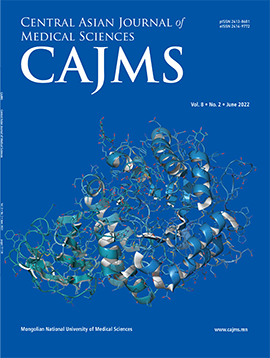Comparative Physicochemical Characterization of Drinking Water from Select Endpoints of Use and Household Storage Containers in Ulaanbaatar City, Mongolia
DOI:
https://doi.org/10.24079/cajms.2018.12.004Keywords:
Water Supplies, Quality, Water, MongoliaAbstract
Objectives: The aim of this study was to assess drinking water quality at 12th Khoroo of Sukhbaatar District of Ulaanbaatar, Mongolia. Methods: Water samples were collected at four different locations and water sources included a borehole well, plastic containers from two different households and from the drinking water faucet of the Family Health Center. Samples were analyzed for complete physicochemical characterization. Results were compared to the National Standard (MNS 0900:2018), WHO and EPA guideline values. Results: Indicators of drinking water quality were within the national and international guideline values in collected water samples except for aluminum (maximum measured value 1.5 mg/l, WHO guideline value 0.2 mg/l) and iron (maximum measured value 13.9 mg/l, WHO guideline value 0.3 mg/l). In addition, some diversity in concentrations was observed depending on water sources. Conclusion: Overall, samples for majority of physical and chemical parameters lie within guideline limits as set by WHO except for aluminum and iron. Thus, more research is needed to cover a larger area of the city with full physicochemical and microbiological characterization.
Downloads
220
Downloads
Published
How to Cite
Issue
Section
License
Copyright (c) 2018 Mongolian National University of Medical Sciences

This work is licensed under a Creative Commons Attribution-NonCommercial 4.0 International License.




